|
Books Should Be Free Loyal Books Free Public Domain Audiobooks & eBook Downloads |
|
|
Books Should Be Free Loyal Books Free Public Domain Audiobooks & eBook Downloads |
|
Fiction |
|---|
|
Book type:
Sort by:
View by:
|
By: Edward M. Forster (1879-1970) | |
|---|---|
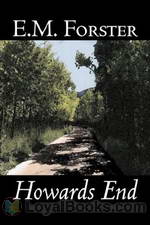 Howards End
Howards End
It's sad, but true to say that today Edward Morgan Forster's works are known more from their film and television adaptations rather than from their original novels. Yet, these adaptations have spurred many a fascinated viewer into going back to the library and finding the book that the film or miniseries was based on and this is ultimately the power of Forster's literary appeal. Howard's End was published in 1910 and it marked Forster's first taste of critical and commercial success. He had published three other novels earlier, Where Angels Fear To Tread (1905), The Longest Journey (1907) and A Room With a View (1908) but none of them had been received with so much acclaim... | |
 Where Angels Fear to Tread
Where Angels Fear to Tread
On a journey to Tuscany with her young friend and traveling companion Caroline Abbott, widowed Lilia Herriton falls in love with both Italy and a handsome Italian much younger than herself, and decides to stay. Furious, her dead husband’s family send Lilia’s brother-in-law to Italy to prevent a misalliance, but he arrives too late. Lilia marries the Italian and in due course becomes pregnant again. When she dies giving birth to her child, the Herritons consider it both their right and their duty to travel to Monteriano to obtain custody of the infant so that he can be raised as an Englishman. | |
 The Machine Stops
The Machine Stops
"The Machine Stops" is a science fiction short story by E. M. Forster. After initial publication in The Oxford and Cambridge Review (November 1909), the story was republished in Forster's The Eternal Moment and Other Stories in 1928. After being voted one of the best novellas up to 1965, it was included that same year in the populist anthology Modern Short Stories. The story describes a world in which most of the human population has lost the ability to live on the surface of the Earth. Each individual now lives in isolation below ground in a standard 'cell', with all bodily and spiritual needs met by the omnipotent, global Machine. | |
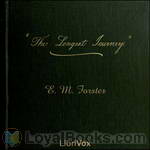 The Longest Journey
The Longest Journey
Frederick Elliot is a student at early 20th century Cambridge, a university that seems like paradise to him, amongst bright if cynical companions, when he receives a visit from two friends, an engaged young woman, Agnes Pembroke, and her older brother, Herbert. The Pembrokes are Rickie’s only friends from home. An orphan who grew up living with cousins, he was sent to a public (boarding) school where he was shunned and bullied because of his lame foot, an inherited weakness, and frail body. Agnes, as it happens, is engaged to Gerald, now in the army, who was one of the sturdy youths who bullied Rickie at school... | |
 Machine Stops (version 4)
Machine Stops (version 4)
"The Machine Stops" is a science fiction story by E. M. Forster. After initial publication in 1909 the story was republished in Forster's The Eternal Moment and Other Stories in 1928. After being voted one of the best novellas up to 1965, it was included that same year in the populist anthology Modern Short Stories. In 1973 it was also included in The Science Fiction Hall of Fame, Volume Two. The story is particularly notable for predicting new technologies such as instant messaging and the Internet... | |
By: Edward M. House (1858-1938) | |
|---|---|
 Philip Dru: Administrator
Philip Dru: Administrator
Philip Dru: Administrator: a Story of Tomorrow, 1920-1935 is a futuristic political novel published anonymously in 1912 by Edward Mandell House, an American diplomat, politician and presidential foreign policy advisor. His book's hero leads the democratic western U.S. in a civil war against the plutocratic East, and becomes the dictator of America. Dru as dictator imposes a series of reforms that resemble the Bull Moose platform of 1912 and then vanishes. | |
By: Edward Ormondroyd | |
|---|---|
 David and the Phoenix
David and the Phoenix
David knew that one should be prepared for anything when one climbs a mountain, but he never dreamed what he would find that June morning on the mountain ledge. There stood an enormous bird, with a head like an eagle, a neck like a swan, and a scarlet crest. The most astonishing thing was that the bird had an open book on the ground and was reading from it! This was David’s first sight of the fabulous Phoenix and the beginning of a pleasant and profitable partnership. The Phoenix found a great... | |
By: Edward P. Roe (1838-1888) | |
|---|---|
 He Fell in Love with His Wife
He Fell in Love with His Wife
James desperately needs someone to help him keep his farm going, but has failure after colossal failure finding a good housekeeper. Alida marries a man only to find out he's already married. She's so undone when she finds out that she just wants to go somewhere where no one will judge her for her misfortune, where she can work and keep herself fed and clothed. James and Alida meet and arrange for a strictly business marriage, leaving loving and honoring out of the vows. The title of the book tells the rest of the story, but the way it gets there is worth the journey. (Introduction by TriciaG) | |
By: Edward Phillips Oppenheim (1866-1946) | |
|---|---|
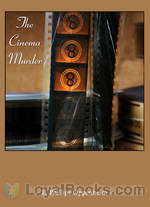 The Cinema Murder
The Cinema Murder
Phillip Romilly is a poor art teacher in London. He finds out that his wealthy cousin Douglas has been seeing his girl friend Beatrice behind his back. He strangles Douglas, throws him in the canal, and assumes his identity. Douglas had booked passage to America for the next day, so after a pleasant sea voyage Phillip arrives at the Waldorf Hotel in New York as Douglas Romilly. An hour after checking in he disappears again, and assumes yet another identity, one that his cousin had set up for himself. Douglas was facing massive financial problems, and he, too, had planned to avoid his problems by getting lost in the crowd in New York. Now, in chapter two…. | |
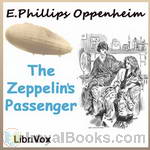 The Zeppelin's Passenger
The Zeppelin's Passenger
The Zeppelin’s Passenger is a tale of German espionage in England during World War I. Dreymarsh is a fictional “backwater” area in England with no apparent military value. The story begins with Dreymarsh residents discovering an observation car from a German zeppelin along with a Homburg hat near Dreymarsh. The mystery is further complicated when an Englishman, Mr. Hamar Lessingham, presents himself at Mainsail Haul which is the residence of Sir Henry Cranston. Lessingham bears with him, hand-carried letters from Major Richard Halstead, and a British prisoner of war in Germany... | |
 The Great Impersonation
The Great Impersonation
E. Phillips Oppenheim, an English novelist created well in excess of 100 novels and 30 plus collections of short stories. Most of his tales are thrillers and espionage. The Great Impersonation was written following World War I and is considered by many to be perhaps his best novel. The story focuses on German espionage in England prior to the start of World War I. The tale centers on two characters that are almost identical in appearance. Indeed, while both attend the same school in England, they are often mistaken for one another... | |
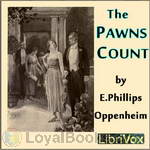 The Pawns Count
The Pawns Count
"I am for England and England only," John Lutchester, the Englishman, asserted."I am for Japan and Japan only," Nikasti, the Jap, insisted."I am for Germany first and America afterwards," Oscar Fischer, the German-American pronounced."I am for America first, America only, America always," Pamela Van Tale, the American girl, declared.They were all right except the German-American.It is during World War I. A chemist, Sandy Graham, has discovered a new powerful explosive, but he let's it slip in a London restaurant that he has made the discovery... | |
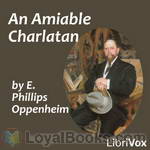 An Amiable Charlatan
An Amiable Charlatan
An Englishman is enjoying his dinner at Stephano's, at which he is a regular diner. A man enters quickly, sits at his table, starts eating his food, and hands him a packet underneath the table! So begins Paul Walmsley's acquaintance - and adventures - with American adventurer Joseph H. Parker and his lovely daughter, Eve. (Intro by TriciaG)Note that there is an alternate reading of section 8. Both are excellent renditions, so enjoy either or both of them. | |
 Havoc
Havoc
Havoc occurs when European countries are discussing covert alliances. The story revolves around the creation of a secret alliance between Germany, Russia, and Austria. The English hope to split Russia away by holding the Czar to his previous public commitments, but they need proof of what was done to create the pressure. All the pressures that lead to WWI are there, but the intrigues and secret treaties create an interesting background to the twists and turns of the plot. | |
 Jacob's Ladder
Jacob's Ladder
| |
 Vanished Messenger
Vanished Messenger
A conference of European nations is being held in the Hague. England has not been invited to attend. Some think war is about to break out. Mr. John P. Dunster, an American, is traveling to the Hague with an important document that may prevent the outbreak of war when he mysteriously disappears after a train wreck in England. Richard Hamel is asked by the British government to attempt to solve the mystery of Dunster’s disappearance and prevent the outbreak of war in Europe. | |
 Yellow House
Yellow House
Vicar and his two daughters move to a small, quiet country village and soon learn that their neighbor in the yellow house holds secrets that will change everything they thought to be real in their lives. | |
 Stolen Idols
Stolen Idols
Two temple statues, one with the most beautiful of features, the other a hideous sight, are at the core of this tale of adventure and the supernatural. Carved by Chinese craftsmen, they have stood to either side of the great Buddha for hundreds of years, worshipped and protected by generations of priests.Taken together, they represent human nature in balance, the spiritual with the bestial, the Soul with the Body. But what if they are separated? Ancient legend warns of disaster to anyone who disturbs that balance... | |
By: Edward S. Ellis (1840-1916) | |
|---|---|
 Steam Man of the Prairies
Steam Man of the Prairies
Ethan Hopkins and Mickey McSquizzle-a "Yankee" and an "Irishman"-encounter a colossal, steam-powered man in the American prairies. This steam-man was constructed by Johnny Brainerd, a teenaged boy, who uses the steam-man to carry him in a carriage on various adventures. | |
By: Edward Stratemeyer (1862-1930) | |
|---|---|
 The Rover Boys on the Ocean
The Rover Boys on the Ocean
The hearty, all-American Rover Boys sail by yacht to Africa in search of their kidnapped father. | |
 Outdoor Chums in the Big Woods
Outdoor Chums in the Big Woods
“That looks like a challenge, Frank.” “It was well fired, at any rate, Bluff!” “I should say yes, because it knocked my hat clear off my head. Do we stand for that sort of thing, or shall we accept the dare?” “There are half a dozen and more of the enemy against four Outdoor Chums, but what of that? This is the first snow of the fall, with a real tang in the air. Say yes, Frank, and let’s get busy!” “Here are Bluff and Jerry ready to eat up that crowd in a snowball fight. What... | |
By: Edwin Abbott Abbott (1838-1926) | |
|---|---|
 Flatland: A Romance of Many Dimensions
Flatland: A Romance of Many Dimensions
If you've never heard the term “Mathematical Fiction” before, Edwin Abbott Abbott's 1884 novella, Flatland can certainly enlighten you! Flatland: A Romance of Many Dimensions was published in 1884 and since then, it has been discovered and re-discovered by succeeding generations who have been delighted by its unique view of society and people. The plot opens with a description of the fictional Flatland. The narrator calls himself “Square” and asks readers to “Imagine a vast sheet of paper on which straight Lines, Squares, Triangles, Pentagons, Hexagons and other figures, instead of remaining fixed in their places, move freely about... | |
By: Edwin F. Benson (1867-1940) | |
|---|---|
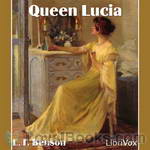 Queen Lucia
Queen Lucia
E. F. Benson (1867-1940) was born at Wellington College in Berkshire, where his father, who later went on to become the Archbishop of Canterbury, was the first Headmaster. He wrote 105 books in all. Queen Lucia (first published in 1920) was the first of Benson’s ‘Mapp and Lucia’ novels of which there were six. This first book is a comedy of manners based in the provincial village of Riseholme, where Emmeline Lucas (the Queen Lucia of the title) presides over the social and artistic universe of the gullible residents... | |
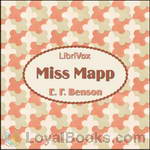 Miss Mapp
Miss Mapp
E. F. Benson’s Mapp and Lucia series, consists of six novels and three short stories. The novels are: Queen Lucia, Lucia in London, Miss Mapp (including the short story The Male Impersonator), Mapp and Lucia, Lucia’s Progress (published as The Worshipful Lucia in the U.S.) and Trouble for Lucia. Most of these works are set in the fictional village of “Tilling”, which is based on the village of Rye, Sussex, England. “Mallards”, the house with the garden room inhabited by Miss Mapp, and later by Lucia, is based on Lamb House, Benson’s own home in Rye. Earlier, the house was the Sussex home of writer Henry James. | |
 Dodo Wonders
Dodo Wonders
"Dodo Wonders" is the third and last of the "Dodo" novels by E.F. Benson, author of the "Mapp and Lucia" series as well as numerous stand-alone novels and short stories. Dodo was rumored to be based on Lady Margot Asquith; when questioned about it, Lady Asquith reportedly replied that Benson had taken nothing from her for the character of Dodo "except her drawing-room." "Dodo Wonders" takes Benson's characters, the glittering socialite Lady Dodo Chesterford, her husband, and friends into World War I-era England... | |
By: Edwin L. Arnold | |
|---|---|
 Gulliver of Mars
Gulliver of Mars
This escapist novel, first published in 1905 as Lieutenant Gullivar Jones: His Vacation, follows the exploits of American Navy Lieutenant Gulliver Jones, a bold, if slightly hapless, hero who is magically transported to Mars; where he almost outwits his enemies, almost gets the girl, and almost saves the day. Somewhat of a literary and chronological bridge between H.G. Wells and Edgar Rice Burroughs, Jones’ adventures provide an evocative mix of satire and sword-and-planet adventure. | |
By: Elbert Hubbard (1856-1915) | |
|---|---|
 Mintage
Mintage
Elbert Hubbard is best known as the author of the "Little Journeys To The Homes of Famous People". These 11 short stores show the side of him that celebrated caring, friendship love among humans. The first describes how 5 frightened orphan children from a foreign country were cared for on a railroad journey of a thousand miles; all by strangers without any planning and without a word of English being spoken or needed. He observed caring human men and women of all ages doing whatever was necessary to see they reached their destination in whatever comfort could be provided... | |
 Little Journeys
Little Journeys
LITTLE JOURNEYS TO THE HOMES OF THE GREATBY Elbert HubbardGEORGE ELIOTMay I reach That purest heaven, be to other souls The cup of strength in some great agony, Enkindle generous ardor, feed pure love, Beget the smiles that have no cruelty-- Be the good presence of a good diffused, And in diffusion ever more intense. So shall I join the choir invisible Whose music is the gladness of the world. Warwickshire gave to the world William Shakespeare. It also gave Mary Ann Evans. No one will question that... | |
 Little Journeys to the Homes of the Great
Little Journeys to the Homes of the Great
LITTLE JOURNEYS TO THE HOMES OF AMERICAN STATESMENBy ELBERT HUBBARDBERT HUBBARD A little more patience, a little more charity for all, a little more devotion, a little more love; with less bowing down to the past, and a silent ignoring of pretended authority; a brave looking forward to the future with more faith in our fellows, and the race will be ripe for a great burst of light and life. --Elbert Hubbard It was not built with the idea of ever becoming a place in history: simply a boys' cabin in the woods... | |
By: Elbridge Streeter Brooks (1846-1902) | |
|---|---|
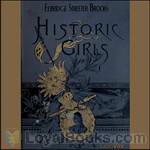 Historic Girls
Historic Girls
Twelve short stories of real girls who have influenced the history of their times. | |
By: Eleanor Farjeon (1881-1965) | |
|---|---|
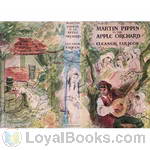 Martin Pippin in the Apple Orchard
Martin Pippin in the Apple Orchard
The wandering minstrel Martin Pippin finds a lovelorn ploughman who begs him to visit the orchard where his beloved has been locked in the well-house with six sworn virgins to guard her. Martin Pippin goes to the rescue and wins the confidence of the young women by telling them love stories. Although ostensibly a children's book, the six love stories, which have much the form of Perrault's fairy tales such as Beauty and the Beast and Cinderella, have a depth which is adult in sentiment, and indeed they were written not for a child but for a young soldier, Victor Haslam... | |
By: Eleanor Gates (1875-1951) | |
|---|---|
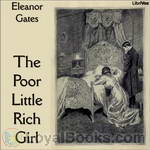 The Poor Little Rich Girl
The Poor Little Rich Girl
The Poor Little Rich Girl is a children’s fantasy about a little girl named Gwendolyn who is lonely and longs for a friend. But she is isolated by rich parents who ignore her and left to the care of servants who are indifferent. Her nanny’s carelessness with some medicine plunges Gwendolyn into a bewildering world in which metaphors literally come to life. | |
By: Eleanor H. Porter (1868-1920) | |
|---|---|
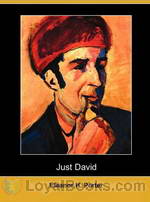 Just David
Just David
A delightful story supporting the notion of finding beauty in all aspects of life, Just David follows a young boy, who slowly transforms the lives of those around him, as he teaches them to embrace the smaller things in life. The classic presents an encouraging tale to look beyond the horizon and not allow the world to dictate one’s action. The story begins with the introduction of a charismatic ten-year old boy David, who together with his father lives in the serene and secluded mountains... | |
 Pollyanna Grows Up
Pollyanna Grows Up
Pollyanna, now cured of her crippling spinal injury, and able to walk again, goes to live in Boston with Mrs. Carew, a heart-broken woman searching for her lost nephew. Aunt Polly goes abroad with Pollyanna’s new Uncle, Dr. Chilton. While in Boston, Pollyanna meets new friends and has several interesting adventures… A startling change in Aunt Polly’s and Pollyanna’s circumstances require Pollyanna to come up with a workable solution. Pollyanna’s solution brings all her new friends from Boston and her old friends in Beldingsville together. Pollyanna also discovers she has to make a choice. Who will win her heart? | |
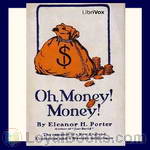 Oh, Money! Money!
Oh, Money! Money!
Mr. Stanley Fulton is worth millions, but he has no one to leave his money to except some unknown distant cousins. In order to find out how they would handle a fortune, he decides to give each of them $100,000 dollars during his life, and go – incognito - to live in their midst! Who will prove worthy to inherit his millions and will his deception be discovered?Eleanor H. Porter was an early 20th century author of children’s literature and novels. Her most well known book was “Pollyanna” and it’s sequel, “Pollyanna Grows Up”. | |
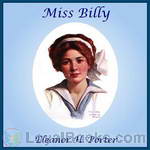 Miss Billy
Miss Billy
Mr. Neilson was determined to name his first child after his boyhood chum, William Henshaw. When the baby disappointed him by being a girl, he was consoled by naming her Billy. Miss Billy, now 18, orphaned and all alone in the world, takes her lawyer’s suggestion to ask her namesake to take her in. Only one little problem – Mr. Henshaw did not know of her existence, and then mistakenly thinks that Billy is a boy!Eleanor H. Porter was an early 20th century author of children’s literature and novels. Her most well known book was “Pollyanna” and it’s sequel, “Pollyanna Grows Up”. | |
 The Road to Understanding
The Road to Understanding
"If Burke Denby had not been given all the frosted cakes and toy shotguns he wanted at the age of ten, it might not have been so difficult to convince him at the age of twenty that he did not want to marry Helen Barnet.""Of course the inevitable happened. However near two roads may be at the start, if they diverge ever so slightly and keep straight ahead, there is bound to be in time all the world between them. In the case of Burke and Helen, their roads never started together at all: they merely crossed; and at the crossing came the wedding... | |
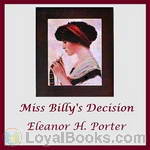 Miss Billy's Decision
Miss Billy's Decision
When Miss Billy closed, Miss Billy and Bertram were happily engaged. In this first sequel to Miss Billy, will the path to wedded bliss run smooth or will misunderstandings and heartache cross their path? Find out in “Miss Billy’s Decision”! | |
 Miss Billy Married
Miss Billy Married
At the opening to this second sequel to Miss Billy (Miss Billy, Miss Billy's Decision, Miss Billy Married), we find Bertram and Billy finally at the altar. Will wedded bliss ensue and are the patter of little feet on the horizon? Or is misunderstanding and heartache in the cards again? Find out in Miss Billy Married! | |
 Dawn
Dawn
Dawn (also known in England as "Keith’s Dark Tower"), was published in 1919, and is set during World War I. Keith Burton is going blind. It is hard for him and his family. Most of the book deals with their ways- right and wrong- of dealing with the situation. At the end, Keith finds pride in helping blind solders.Eleanor H. Porter was a writer of many popular children’s books and novels, including the Pollyanna and Miss Billy series, as well as Just David, Oh, Money! Money! and more. | |
 Mary Marie
Mary Marie
A charming 'coming of age' story about a young girl, Mary Marie, whose young life is thrown into turmoil as her parents divorce. As she leads two lives, she comes to realize that her parents still love one another, and engineers a reunion. In the end, we discover the long-lasting effect of this turmoil on the adult Mary Marie, and her own marriage." | |
 Turn Of The Tide
Turn Of The Tide
"What a joy! How exciting! Margret Kendall returned home, to her loving and equally beloved mother's arms after 4 years in the slums of New York City- where she endured unimaginable hardships. This hardship made the naturally brilliant nine-years-old strong, resourceful, and full of questions which her mother finds it hard to answer. But this is not the end of the problems she would have to face. Those will include her mother's intended marriage, her need to get along with her stepfather's people, and her ever present worry about her poor friends from New York who were there for her in her darkest moments... | |
 Cross Currents
Cross Currents
Cross Currents: The Story of Margaret, to give it its full title, is delightful story about a little girl’s resilience and a mother’s unwavering love, from the beloved author of Pollyanna. Margaret Kendall (the Margaret of the story) has known nothing but love, wealth and privilege for the first five years of her life. An accident during a visit with her mother to New York City leaves little Margaret alone and fending for herself. While her mother searches desperately for her, Margaret has to do the best she can by herself... | |
By: Eleanor Hallowell Abbott (1872-1958) | |
|---|---|
 The Indiscreet Letter
The Indiscreet Letter
Three fellow travelers on a train enter into a discussion concerning what they would call an ‘indiscreet letter.’ The discussion albeit short, produces some rather interesting revelations during the journey and at journey’s end. | |
 Peace On Earth, Good-Will To Dogs
Peace On Earth, Good-Will To Dogs
“If you don’t like Christmas stories, don’t read this one!And if you don’t like dogs I don’t know just what to advise you to do!For I warn you perfectly frankly that I am distinctly pro-dog and distinctly pro-Christmas, and would like to bring to this little story whatever whiff of fir-balsam I can cajole from the make-believe forest in my typewriter, and every glitter of tinsel, smudge of toy candle, crackle of wrapping paper, that my particular brand of brain and ink can conjure up on... | |
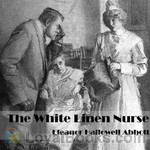 The White Linen Nurse
The White Linen Nurse
Throughout three years of school, Rae Malgregor had been perfectly pliant, perfectly compliant to all the demands placed on her. But now, on the eve of graduation, she couldn’t go on with the mask of artificiality and the air of perfection. She had been chasing this nursing job three whole years, but there was just no wag to it! The Superintendent was stunned. Her best student! The Senior Surgeon was all grey granite business and livid that his time was being taken up with a hysterical nurse! And yet, though he wouldn’t have admitted it to anyone, especially himself, his interest was piqued. | |
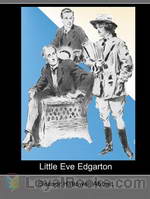 Little Eve Edgarton
Little Eve Edgarton
Eve Edgarton is not who she seems she is. A short encounter with Mr. Barton show that first impressions are not always right or indicative of one’s seemingly obvious preference or one’s proclivity. | |
By: Eleanor M. Ingram (1886-1921) | |
|---|---|
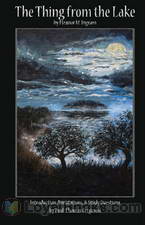 The Thing from the Lake
The Thing from the Lake
To get away from city life periodically, New Yorker Roger Locke purchases an abandoned farm house in rural Connecticut, and with the assistance of his cousin Phillida and her beau Ethan Vere, he sets about fixing up the place. Immediately however, an unseen mysterious woman begins giving him warnings during nocturnal visits to leave the house at once. Soon he begins hearing strange ominous sounds emanating from the tiny lake at the back of the house coupled with a permeation of sickly odors. An evil presence then begins to visit him during the witching hours of the late night, challenging him to a battle of wits from which there can be only one victor... | |
By: Elia Wilkinson Peattie (1862-1935) | |
|---|---|
 The Precipice
The Precipice
Elia Peattie was an outspoken journalist and social activist who gave her attention to such areas as orphanages, charity hospitals, the Wounded Knee massacre, capital punishment, and the like. The Precipice is partially based on the life of her close friend Katherine Ostrander, a social work pioneer, and tells of the evolution of Kate Barrington after her college years and with it the evolution of society as a whole and women in particular in pre-World War I America. Friendship, romance, betrayal, searchings of the soul, dreams, and shattered hopes -- all the stuff of life -- bring Kate to full realization of her true self. (Introduction by Mary Schneider) | |
By: Elisabeth Sanxay Holding (1889-1955) | |
|---|---|
 Collected Works of Elisabeth Sanxay Holding
Collected Works of Elisabeth Sanxay Holding
A collection of 4 short works by Elisabeth Sanxay Holding. - Summary by Krista Zaleski | |
By: Eliza Haywood (1693-1756) | |
|---|---|
 The History of Miss Betsy Thoughtless, Volume 1
The History of Miss Betsy Thoughtless, Volume 1
The flirtations of a rich young maiden, Miss Betsy Thoughtless with several suitors, as she alienates the right man by refusing to take the issue of marriage seriously. Because of this her guardian commits her to marriage to the wrong man, a situation over which she has little control. As the heroine describes her fate, this text exposes the institution of marriage, the powerlessness of women and the double standards held during that time.(Introduction by Joyce Martin) | |
By: Elizabeth Bonhôte (1744-1818) | |
|---|---|
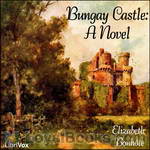 Bungay Castle: A Novel
Bungay Castle: A Novel
MANUAL OF SURGERY, OXFORD MEDICAL PUBLICATIONSBY ALEXIS THOMSON, F.R.C.S.Ed.PREFACE TO SIXTH EDITION Much has happened since this Manual was last revised, and many surgical lessons have been learned in the hard school of war. Some may yet have to be unlearned, and others have but little bearing on the problems presented to the civilian surgeon. Save in its broadest principles, the surgery of warfare is a thing apart from the general surgery of civil life, and the exhaustive literature now available on every aspect of it makes it unnecessary that it should receive detailed consideration in a manual for students... | |
By: Elizabeth Gaskell | |
|---|---|
 The Grey Woman
The Grey Woman
A “Bluebeard” story in which a young woman marries a man whom she discovers has killed his previous wives and is trying to kill her as well. | |
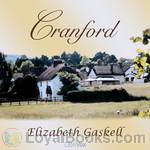 Cranford
Cranford
Cranford is the best-known novel of the 19th century English writer Elizabeth Gaskell. It was first published in 1851 as a serial in the magazine Household Words, which was edited by Charles Dickens. | |
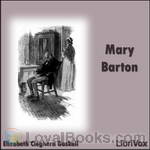 Mary Barton
Mary Barton
Mary Barton is the first novel by English author Elizabeth Gaskell, published in 1848. The story is set in the English city of Manchester during the 1830s and 1840s and deals heavily with the difficulties faced by the Victorian lower class. The novel begins in Manchester, where we are introduced to the Bartons and the Wilsons, two working class families. John Barton reveals himself to be a great questioner of the distribution of wealth and the relation between the rich and the poor. He also relates how his sister-in-law Esther has disappeared after she ran away from home... | |
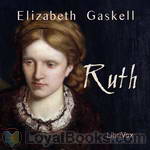 Ruth
Ruth
The book is a social novel, dealing with Victorian views about sin and illegitimacy. It is a surprisingly compassionate portrayal of a ‘fallen woman’, a type of person normally outcast from respectable society. The title of the novel refers to the main character Ruth Hilton, an orphaned young seamstress who is seduced and then abandoned by gentleman Henry Bellingham. Ruth, pregnant and alone, is taken in by a minister and his sister. They conceal her single status under the pretence of widowhood in order to protect her child from the social stigma of illegitimacy... | |
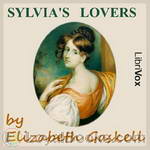 Sylvia's Lovers
Sylvia's Lovers
The novel begins in the 1790s in the coastal town of Monkshaven. Sylvia Robson lives with her parents on a farm, and is loved by her rather dull Quaker cousin Philip. She, however, meets and falls in love with Charlie Kinraid, a sailor on a whaling vessel, and they become engaged, although few people know of the engagement. But Charlie gets press-ganged and have to leave without a word. | |
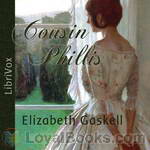 Cousin Phillis
Cousin Phillis
Cousin Phillis (1864) is a novel by Elizabeth Gaskell about Paul Manning, a youth of seventeen who moves to the country and befriends his mother's family and his second cousin Phillis Holman, who is confused by her own placement at the edge of adolescence. Most critics agree that Cousin Phillis is Gaskell's crowning achievement in the short novel. The story is uncomplicated; its virtues are in the manner of its development and telling. | |
 Round the Sofa
Round the Sofa
Round the Sofa (1859), is a book of stories by the lady that Charles Dickens called his “dear Scheherazade” due to her skill as a story teller. That Lady was Mrs. Elizabeth Gaskell (North and South, Wives and Daughters, Cranford etc.). Mrs. Gaskell begins with Round the Sofa, a short story which she uses as a device to stitch together six previously published stories into a single work. It introduces us to a set of characters who take turns to recount stories to one another during their weekly soirée... | |
 My Lady Ludlow
My Lady Ludlow
This novella by the acclaimed Elizabeth Gaskell follows the reminiscences and life of aristocratic Lady Ludlow, told through the eyes of one of her charges, the young Margaret Dawson. Lady Ludlow epitomizes the unwillingness of the old English gentry to accept the progression of social reform and technology, such as education for the poor and religious leniency. She reminisces about her friends in the French revolution and tries to protect and guide the numerous young ladies she has taken under her care. | |
 Dark Night's Work
Dark Night's Work
Love, murder and class commentary in Mrs Gaskell's usual brilliant style! This novel was originally serialised and published by Charles Dickens, with whom Mrs Gaskell had several disagreements. She chose to avoid melodrama and concentrate on psychological realism to produce a moving story of people meeting and parting across class divides. | |
 Cranford (version 2)
Cranford (version 2)
Cranford is set in a small market town populated largely by a number of respectable ladies. It tells of their secrets and foibles, their gossip and their romances as they face the challenges of dealing with new inhabitants to their society and innovations to their settled existence. It was first published between 1851 and 1853 as episodes in Charles Dickens’ Journal Household Words. Appended to this recording is a short sequel, The Cage at Cranford, written ten years later and published in the journal All the Year Round... | |
By: Elizabeth Inchbald (1753-1821) | |
|---|---|
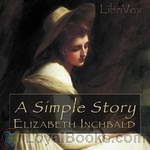 A Simple Story
A Simple Story
The story could really have been simple: Miss Milner, who is admired for her beauty and charm, could have been a socialite, marry a respectable and good looking man and be happy in the standards of her time. But if it was so, why would there be a book? Miss Milner, beautiful and charming as she is, announces her wish to marry her guardian, a catholic priest. But women in the 18th century do not declare their wishes or speak about their passions, and- after all- he is a catholic priest… And if he finds a way to marry her, is this her road to happiness? | |
By: Elizabeth Prentiss (1818-1878) | |
|---|---|
 Aunt Jane's Hero
Aunt Jane's Hero
Aunt Jane is a good and loving woman, important to everyone except herself, always willing to give good advice. Her "hero", Horace, is far different: in the beginning of the story, he is a good but a little unthoughtful youth. But at the end, his unthoughtfulness is replaced by his love to god. Beside aunt Jane and her "hero", there is quite a large cast of other unforgettable characters who show us a lot of important things. (Summary by Stav Nisser.) | |
By: Elizabeth Roberts MacDonald (1864-1922) | |
|---|---|
 Our Little Canadian Cousin
Our Little Canadian Cousin
In " Our Little Canadian Cousin," the author's intention is to tell, in a general way and in one defined local setting, the story of Canadian home life in the late 19th century. To Canadians, home life means not merely sitting at a huge fire-place, or brewing and baking in a wide country kitchen, or dancing of an evening, or teaching, or sewing ; but it means the great outdoor life — sleighing, skating, snow-shoeing, hunting, canoeing, and, above all, " camping out " — the joys that belong to a vast, uncrowded country, where there is " room to play." | |
By: Elizabeth Stoddard (1823-1902) | |
|---|---|
 The Morgesons
The Morgesons
Stoddard’s novel traces the education and development of a young female in American middle-class society. The protagonist, Cassandra Morgeson, is educated by a series of journeys she makes throughout her youth and early adulthood. Each new setting represents a different stage in her intellectual development.Cassandra is born in Surrey, a small New England town. Surrey is quiet and isolated, granting a young woman little intellectual stimulation. Cassandra escapes the boredom of domestic life through stories of adventure and exploration. Surrey instills in Cassandra a restlessness that drives her quest for knowledge and experience.(Introduction by Wikipedia) | |
By: Elizabeth Stuart Phelps (1844-1911) | |
|---|---|
 The Story of Avis
The Story of Avis
Elizabeth Stuart Phelps's 1877 novel is set in a New England college town, and focuses on Avis Dobell, a professor's daughter. Avis is a talented painter, and bucks against the constraints placed on women in the 19th century. She wants to pursue a career as an artist and rejects marriage and motherhood, until she meets the charismatic young professor Philip Ostrander. Phelps's novel is a beautifully-written examination of the conflicts between marriage and career for women that is still relevant today. | |
By: Elizabeth von Arnim (1866-1941) | |
|---|---|
 The Enchanted April
The Enchanted April
It’s a dreary February in post-World War I London when Mrs. Wilkins spots an advertisement in The Times for a small Italian castle for rent in April. She sees another member of her women’s club, Mrs. Arbuthnot, reading the same advertisement and manages to convince her that the two of them should rent it. Both are miserable and lonely in their marriages. They can’t afford the cost of the villa, San Salvatore, on their own and must advertise for two others, eventually recruiting an elderly widow named Mrs... | |
 The Princess Priscilla's Fortnight
The Princess Priscilla's Fortnight
The Princess Priscilla of Lothen Kunitz finds court life stifling and runs away to England with the elderly court librarian. Her intention is to live a pure and simple life filled with good works. But life among ordinary people in an English village is not what she expects it to be... (Introduction by Tabithat) | |
By: Elizabeth Von Arnim (1866-1941) | |
|---|---|
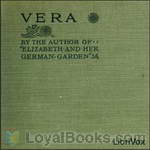 Vera
Vera
Vera (1921) by Elizabeth von Arnim is a black comedy based on her disastrous second marriage to Earl Russell: a mordant analysis of the romantic delusions through which wives acquiesce in husbands' tyrannies. In outline the story of this utterly unromantic novel anticipates DuMaurier's Rebecca. Naive Lucy Entwhistle is swept into marriage by widower, Everard Wemyss. His mansion "The Willows" is pervaded by the spectre of his dead wife Vera, with whom Lucy becomes obsessed. ... Here the servants are partisan for both wives, and lose no opportunity to disrupt Everard's unctuous, oppressive household routines... | |
By: Elizabeth von Arnim (1866-1941) | |
|---|---|
 The Pastor's Wife
The Pastor's Wife
Written by an author born in Australia, grew up in England, married in Germany, and then flew to the United States. A tale about a young woman, freed up from the bonds of her family life, to wonder all around in search of all things feminist. The story seems somewhat autobiographical, surrounded in disillusionment and humor. Written on the eve of World War I and just back from married life in Germany. | |
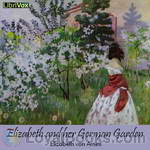 Elizabeth and her German Garden
Elizabeth and her German Garden
Elizabeth and Her German Garden is a novel by Elizabeth von Arnim, first published in 1898; it was very popular and frequently reprinted during the early years of the 20th century. The story is a year's diary written by the protagonist Elizabeth about her experiences learning gardening and interacting with her friends. It includes commentary on the beauty of nature and on society, but is primarily humorous due to Elizabeth's frequent mistakes and her idiosyncratic outlook on life. She looked down upon the frivolous fashions of her time writing "I believe all needlework and dressmaking is of the devil, designed to keep women from study... | |
 Benefactress
Benefactress
Anna Estcourt, twenty-five and beautiful, is the penniless ward of her distant brother and his exasperating wife. Turning down all offers of marriage, scornful at the thought of leaning on a man for help and comfort, she thinks only of the independence which seems an impossible dream. But out of the blue Uncle Joachim, her mother's brother, leaves her a handsome property in Germany. Her longed for independence is within her grasp, and though it's a rocky beginning with the locals, she loves her new home... | |
By: Ella Middleton Tybout (1871-1952) | |
|---|---|
 The Wife of the Secretary of State
The Wife of the Secretary of State
In this political thriller set at the turn of the 20th century, several lives, both of Washington insiders and those on the periphery, intersect over the issue of some stolen diplomatic papers. And what hidden secrets bind Mrs. Redmond, the wife of the Secretary of State, to the unscrupulous Count Valdmir, the Russian ambassador? Politics, power, and intrigue combine in this novel, first published in 1905. | |
By: Ella Rodman Church (1831-) | |
|---|---|
 Among the Trees at Elmridge
Among the Trees at Elmridge
"On that bright spring afternoon when three happy, interested children went off to the woods with their governess to take their first lesson in the study of wild flowers, they saw also some other things which made a fresh series of "Elmridge Talks," and these things were found among the trees of the roadside and forest." | |
By: Ella Scrymsour (1888-1962) | |
|---|---|
 Perfect World
Perfect World
Almost certainly the merging of two separate magazine novellas, where Scrymsour attempted to weave together the plots. In this fantasy/ science fiction novel, the two young gentlemen protagonists are transported from a company town dominated by their family coalmine into an underground cave system where an oligarchic exiled race of dwarf Israelites has lived for 3000 years and grown horns. More space and time travel follow bringing our heroes to Jupiter, where romance follows. - Summary by Lynne Thompson | |
By: Ella Wheeler Wilcox (1850-1919) | |
|---|---|
 Poems of Power
Poems of Power
This is a volume in a series of books of poetry by Ella Wheeler Wilcox. This time, the theme is "Power". | |
 Six Bad Husbands and Six Unhappy Wives
Six Bad Husbands and Six Unhappy Wives
This is a collection of six short stories, each of them illustrating that even a marriage which looks perfect from the outside can be sabotaged quite easily by the two people involved. | |
By: Ellen C. Babbitt (1872-) | |
|---|---|
 More Jataka Tales
More Jataka Tales
The continued success of the "Jataka Tales," as retold and published ten years ago, has led to this second and companion volume. Who that has read or told stories to children has not been lured on by the subtle flattery of their cry for "more"? The Jataka tales, regarded as historic in the Third Century B. C., are the oldest collection of folk-lore extant. They come down to us from that dim far-off time when our forebears told tales around the same hearth fire on the roof of the world. | |
By: Ellen Thorneycroft Fowler (1860-1929) | |
|---|---|
 Concerning Isabel Carnaby
Concerning Isabel Carnaby
Isabel Carnaby returns from India. She starts looking for a place in upper class British society. At the begining, people are sceptical of her because she is an orphan. But she will surprise everybody. - Summary by Stav Nisser. | |
By: Elliott O’Donnell (1872—1965) | |
|---|---|
 Animal Ghosts
Animal Ghosts
Summary: This is a collection of ghost stories in which the antagonists are various animals. Divided up into chapters of ghost sightings by each group of animals, you will hear of hauntings by dogs, cats, birds, jungle animals, etc. (Summary by Allyson Hester) | |
By: Ellis Meredith (1865-1955) | |
|---|---|
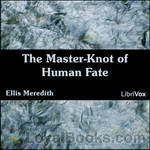 The Master-Knot of Human Fate
The Master-Knot of Human Fate
A tale of two people, and their search for answers to unknown questions. Adam and Robin find themselves inexplicably alone after an apparent natural cataclysm, and are compelled to learn how to survive, how to endure, but most importantly to themselves, how to enjoy, understand their new roles in life, and understand each other. (Introduction by Roger Melin) | |
By: Ellis Parker Butler (1869-1937) | |
|---|---|
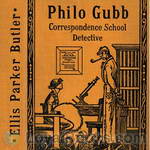 Philo Gubb, Correspondence-School Detective
Philo Gubb, Correspondence-School Detective
Philo Gubb, not being content with his job as wallpaper-hanger, has higher aspirations: to become a detective, just like Sherlock Holmes. To that end, he enrolls in a correspondence course, where he gets lessons through the mail as well as the necessary disguises for a detective. Philo Gubb, not being really clever or intuitive, or even looking good in those disguises, gets involved in one case after the other - and sooner or later happens to stumble on and solve the crime... Each of these stories... | |
 That Pup
That Pup
A puppy, unanounced and unordered, arrives in a crate at Mr. Murchison's house. Humorous events follow. | |
 Adventures of a Suburbanite
Adventures of a Suburbanite
Why is the neighbor so obsessed with his car? Where can we find a good gardener? Should we have a Santa Claus at our Christmas party? Yes, this is suburbia... much the same today as it was in 1911. | |
 Ellis Parker Butler Short Story Collection, Vol 1
Ellis Parker Butler Short Story Collection, Vol 1
Ellis Parker Butler was an American author. He was the author of more than 30 books and more than 2,000 stories and essays. These are eight of his humorous short stories about life. | |
 Perkins of Portland
Perkins of Portland
Amusing tales showing the effectiveness of advertising some rather questionable products. Perkins and the narrator partner in promotions directed at a gullible and willing public. Unlike most tales of the kind, with moralistic endings where the 'sharps' come to grief, Perkins and Co. become wealthy and quite pleased with themselves. | |
By: Elsie Spicer Eells | |
|---|---|
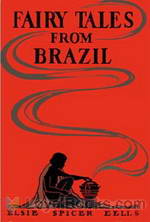 Fairy Tales from Brazil
Fairy Tales from Brazil
This book, subtitled "How and Why Tales from Brazilian Folk-Lore", is a collection of short stories, most of them etiologial myths from Brazilian Indian Folklore. | |
By: Emerson Hough (1857-1923) | |
|---|---|
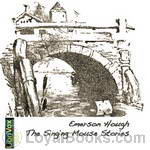 The Singing Mouse Stories
The Singing Mouse Stories
The singing mouse tells tales of nature in songs. This book is for those who want to know how the mountains ate up the plains, what the waters said or where the city went. | |
By: Émile Gaboriau (1832-1873) | |
|---|---|
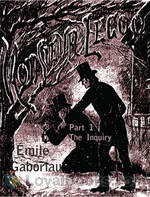 Monsieur Lecoq: The Inquiry
Monsieur Lecoq: The Inquiry
Monsieur Lecoq is a captivating mystery, historical and love story : Around 11 o'clock, on the evening of Shrove Sunday 18.., close to the old Barrière d'Italie, frightful cries, coming from Mother Chupin's drinking-shop, are heard by a party of detectives led by Inspector Gévrol. The squad runs up to it. A triple murder has just been committed. The murderer is caught on the premises. Despite Gévrol's opinion that four scoundrels encountered each other in this vile den, that they began to quarrel, that one of them had a revolver and killed the others, Lecoq, a young police agent, suspects a great mystery... | |
 Monsieur Lecoq Part 2: The Honor of the Name
Monsieur Lecoq Part 2: The Honor of the Name
Monsieur Lecoq is a captivating mystery, historical and love story: Around 11 o'clock, on the evening of Shrove Sunday 18.., close to the old Barrière d'Italie, frightful cries, coming from Mother Chupin's drinking-shop, are heard by a party of detectives led by Inspector Gévrol. The squad runs up to it. A triple murder has just been committed. The murderer is caught on the premises. Despite Gévrol's opinion that four scoundrels encountered each other in this vile den, that they began to quarrel, that one of them had a revolver and killed the others, Lecoq, a young police agent, suspects a great mystery... | |
By: Émile Zola (1840-1902) | |
|---|---|
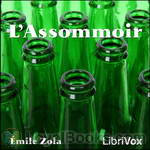 L'Assommoir
L'Assommoir
Émile François Zola (French pronunciation: [emil zɔˈla]) (2 April 1840 – 29 September 1902) was an influential French writer, the most important exemplar of the literary school of naturalism. More than half of Zola’s novels were part of a set of twenty novels about a family under the Second Empire collectively known as Les Rougon-Macquart. L’Assommoir (1877) is the seventh novel in the series. Usually considered one of Zola’s masterpieces, the novel—a harsh and uncompromising study of alcoholism and poverty in the working-class districts of Paris—was a huge commercial success and established Zola’s fame and reputation throughout France and the world. | |
 Therese Raquin
Therese Raquin
An unsatisfied wife kills her weak husband in order to carry on a sordid affair with another man. However, her selfish plans are spoiled when her husband continues to haunt her. This is often said to be Zola's first great novel. | |
 The Flood, trans. by an unknown translator
The Flood, trans. by an unknown translator
A well-to-do French farm family is destroyed by a flood. The story, thrilling to the very end, is told from the point of view of the family’s 70-year-old patriarch. The story speaks of the helplessness of mankind in the face of the forces of nature. | |
 Markets of Paris
Markets of Paris
The Markets of Paris is a remarkable work, and is the one which Zola calls his very best novel, and of which he is far more proud than of any others in his Rougon-Marquart series – prouder than of L’Assommoir. It must have been in his early manhood, when poor and friendless, he lived among the people, that much of the information which makes these pages so startlingly vivid, was acquired. How many mornings, long before dawn, must he have visited these markets – how many hours and days must he have spent there, to have mastered the habits, manners and ways of these people, who are a class by themselves, and of whom we do not lose sight, from the beginning to the end of the book... | |
 Jolly Parisiennes and Other Novelettes
Jolly Parisiennes and Other Novelettes
“The Jolly Parisiennes” by Émile Zola is a very clever, brilliant and interesting romance of a “grande passion” with an undercurrent of political intrigue. The plot is ingenious both in conception and execution, while the tone of the novel is exceedingly bright and vivacious. A peculiar phase of Parisian society is most agreeably dealt with. The heroines, Louise Neigeon and Berthe Gaucheraud, are very jolly ladies indeed, but they never forget that they are ladies, even in their merriest and most eccentric moods... | |
By: Emilie Maceroni (1813-1868) | |
|---|---|
 Magic Words: A Tale for Christmas Time
Magic Words: A Tale for Christmas Time
Magic Words is a Victorian tale of a community and how a few women bring a special kind of Christmas magic to the community-- Magic that can heal wounded hearts. (Introduction by Sean McGaughey) | |
By: Emily Eden | |
|---|---|
 The Semi-Detached House
The Semi-Detached House
If you're a Jane Austen fan, you'll enjoy Emily Eden's comic novels of manners, The Semi-Detached House (1859) and The Semi-Attached Couple (1860). At the opening of The Semi-Detached House, the beautiful (but rather petulant) Lady Blanche Chester, newly married and pregnant, is being installed in a suburban house while her husband is away. Her encounters with her neighbors, and the intrigues of the neighborhood, soon come to absorb and annoy her. | |
 Semi-Attached Couple
Semi-Attached Couple
Young and beautiful Helen Eskdale and fabulously wealthy Lord Teviot seem to be the perfect match. But when they marry, they find that misunderstandings and jealousies continually drive them apart. The machinations and intrigues of a large supporting cast surround the central question of whether their marriage will survive. Emily Eden's comedy of manners is reminiscient of Jane Austen's witty and ironic novels. | |
By: Emily Sarah Holt (1836-1893) | |
|---|---|
 Lady Sybil's Choice
Lady Sybil's Choice
This historical novel is set in the 1100s in France and Jerusalem, following the First Crusade. Part of the story of Guy of Lusignan is told through the eyes of his fictional sister, Elaine. Guy travels to the Holy Land to reclaim it from the Saracens. Elaine follows afterward, finding upon arrival that her brother has fallen in love with Sybil, the sister of the leper king of Jerusalem. Queen Sybilla, a real historical character, is surrounded by political intrigue as she prepares to ascend the throne, which threatens her upcoming marriage to Guy of Lusignan... | |